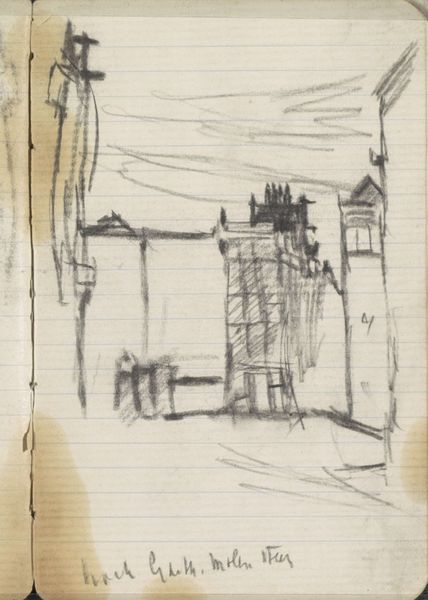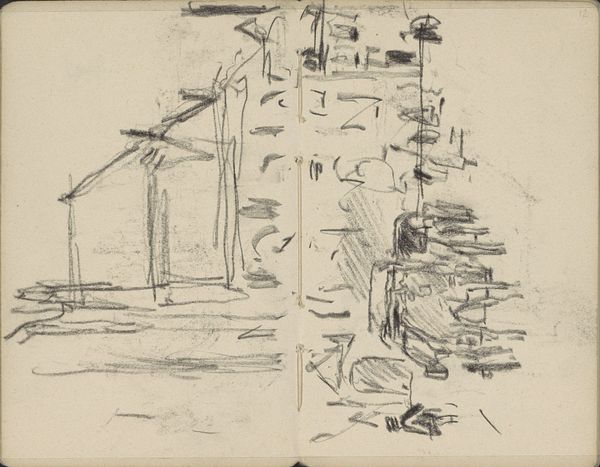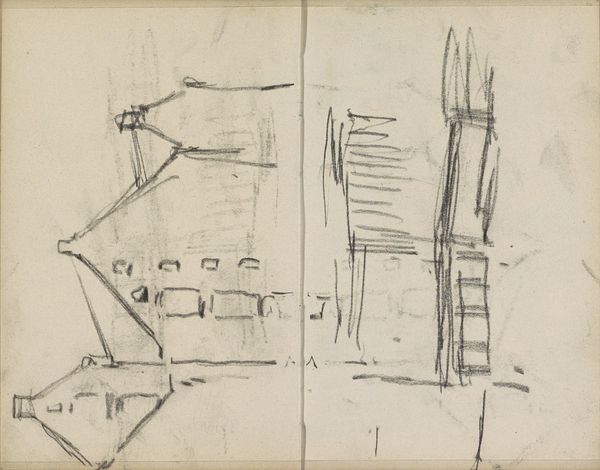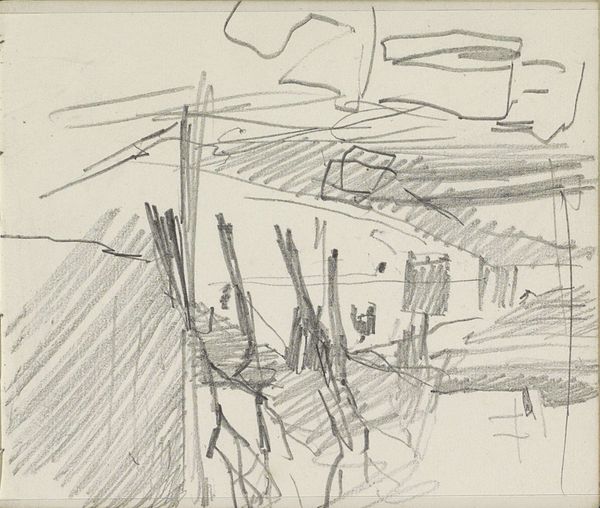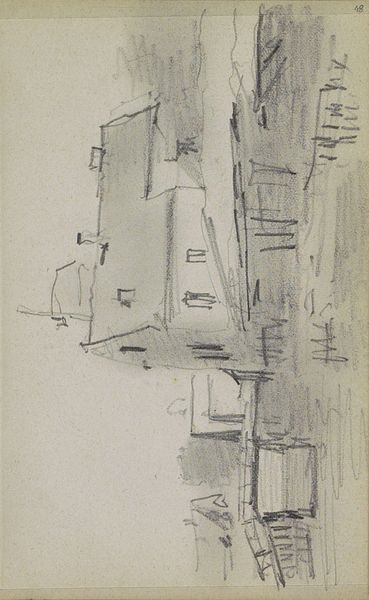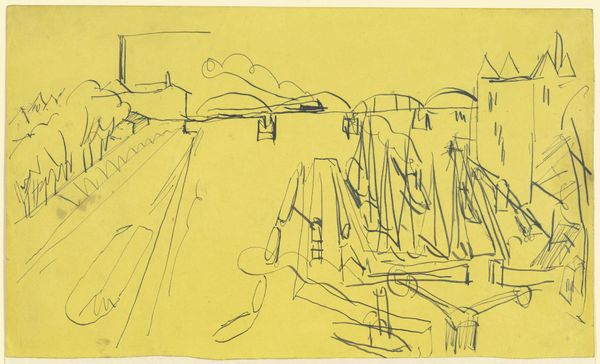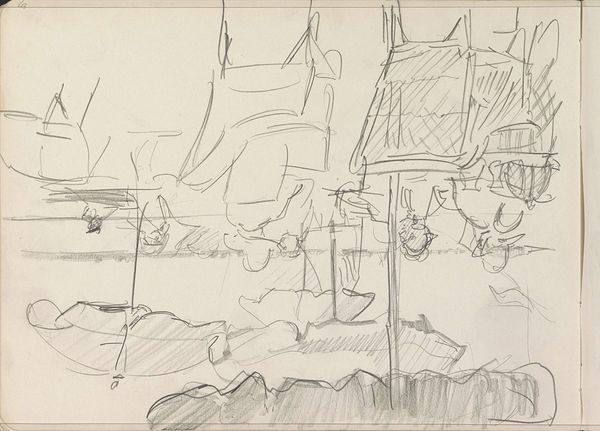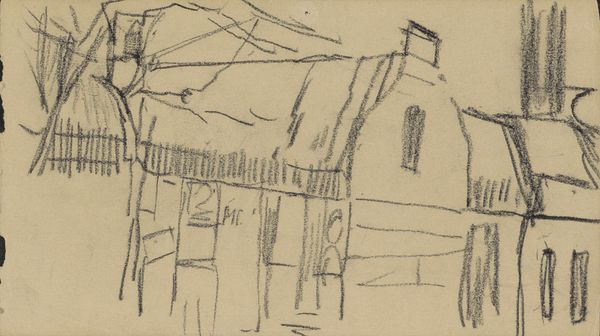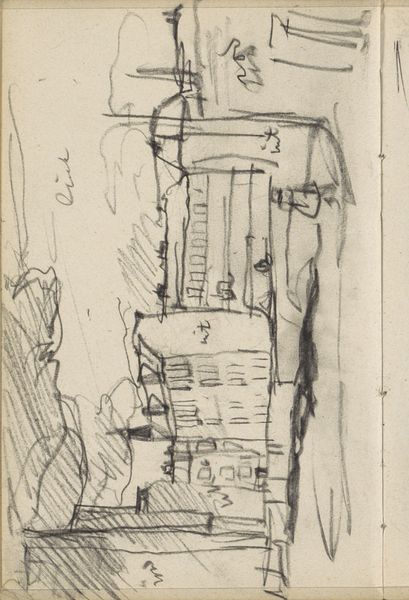
Copyright: Rijks Museum: Open Domain
Curator: This ink and pencil drawing by George Hendrik Breitner, titled "Buildings Along an Amsterdam Canal," was likely sketched between 1893 and 1899. Editor: It strikes me as so raw, almost unfinished, with the heavy shading dominating the lower portion. There is a certain unease to the composition; I think the dark foreground seems to swallow the delicate building outlines. Curator: Indeed. Breitner's work frequently depicted Amsterdam and its working class. I consider this sketch within the context of late 19th-century social realism, where artists aimed to capture everyday life and comment on the social issues facing the rapidly industrializing urban landscape. The stark lines may hint at the social stratification that was then the order of the day. Editor: Well, consider the application of the stark, unwavering lines to illustrate volume in this initial rendering. The way Breitner outlines forms without softening the edges reveals a strong adherence to visual directness. Are we, perhaps, reading into what amounts to the artist's preliminary vision? Curator: Perhaps, but these “preliminary visions” were often shown and collected during Breitner's time and after. One could then read his compositional choice of a dark, overpowering foreground as a commentary on the perceived burden, or "shadow," cast upon the structures along the canal—symbolic of social burdens on its inhabitants. It acknowledges that in urban realities, inequality casts a significant pall. Editor: While that interpretation holds a great deal of critical value, can’t we simply appreciate the work as an exploration of form and texture, a dance between light and shadow executed with deliberate, economical strokes? Semiotically speaking, the marks themselves are freighted with the intentionality to make buildings resemble a building rather than making a building look realistic. Curator: That's fair, but by examining the subject, Amsterdam’s architecture, one could also view the quick sketch as a symbol of both the growth and the inequalities endemic to city life at that time. These buildings signify permanence, perhaps a sense of the status quo. Editor: So, both our positions have, at their center, interpretations dependent on the structures of the buildings themselves. Perhaps the only true answer, in the end, resides in the architectural language of the sketch. Curator: And through that language, Breitner allows us to see the world through his eyes, to contemplate the society in which these structures existed and to reconsider our own.
Comments
No comments
Be the first to comment and join the conversation on the ultimate creative platform.


